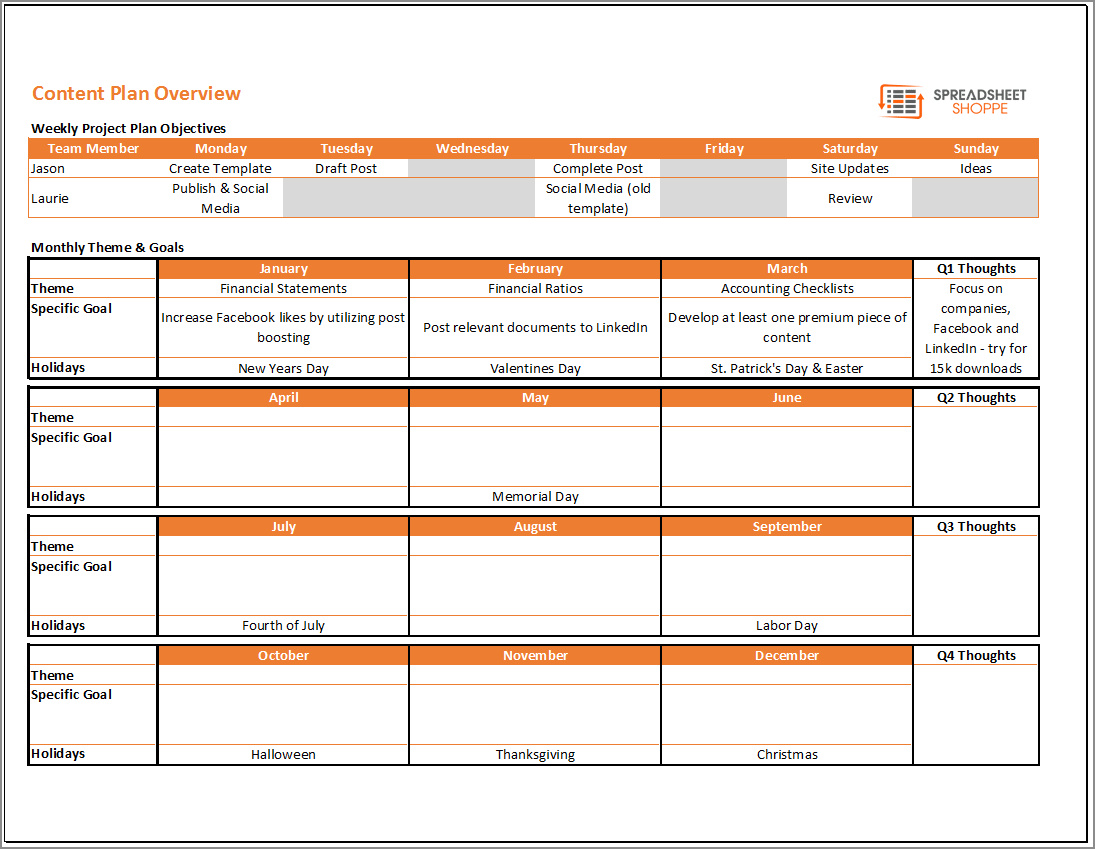Creating a content schedule is a crucial aspect of any successful content strategy. It helps you stay organized, plan, and ensure that your content is consistently published and promoted. By following a well-structured schedule, you can streamline your content creation process, maintain a consistent brand voice, and engage your audience effectively.
In this guide, we will walk you through the steps of creating a content schedule that works for your business. Whether you are a seasoned content marketer or just starting, this article will provide you with valuable insights and practical tips to optimize your content strategy.
What is a Content Schedule?
A content schedule, also known as an editorial calendar, is a roadmap that outlines when and where your content will be published. It serves as a central hub for planning and organizing your content marketing efforts. A well-structured content schedule enables you to plan, set deadlines, assign tasks, and track the progress of your content creation process. It also helps you maintain a consistent publishing frequency, ensuring that your audience receives fresh and relevant content regularly.
A content schedule can be as simple as a spreadsheet or as sophisticated as a project management tool. The key is to choose a format that works best for your team and aligns with your content marketing goals. Whether you prefer a digital calendar or a physical planner, the most important thing is to have a system in place that keeps you organized and accountable.
Why Do You Need a Content Schedule?
Creating and sticking to a content schedule offers numerous benefits for your business. Here are some compelling reasons why you should incorporate a content schedule into your content marketing strategy:
- Consistency: A content schedule ensures that you consistently publish high-quality content at regular intervals. This helps you build trust with your audience and establish your brand as a reliable source of information.
- Time Management: By planning your content, you can allocate sufficient time for research, writing, editing, and promotion. This prevents last-minute rushes and ensures that your content is thoroughly researched and well-crafted.
- Efficiency: A content schedule allows you to streamline your content creation process by providing a clear roadmap. It helps you prioritize tasks, set deadlines, and assign responsibilities, thereby improving collaboration and efficiency within your team.
- SEO Optimization: When you plan your content, you can strategically incorporate relevant keywords, optimize meta tags, and interlink your articles. This helps improve your search engine rankings and drive more organic traffic to your website.
- Engagement: By understanding your audience’s preferences and interests, you can create content that resonates with them. A content schedule enables you to plan a variety of content types, such as blog posts, videos, infographics, and social media posts, to keep your audience engaged and entertained.
- Flexibility: While a content schedule provides a structured framework, it also allows for flexibility. You can adjust your content plan based on current events, industry trends, or changes in your business goals. This ensures that your content remains relevant and up-to-date.
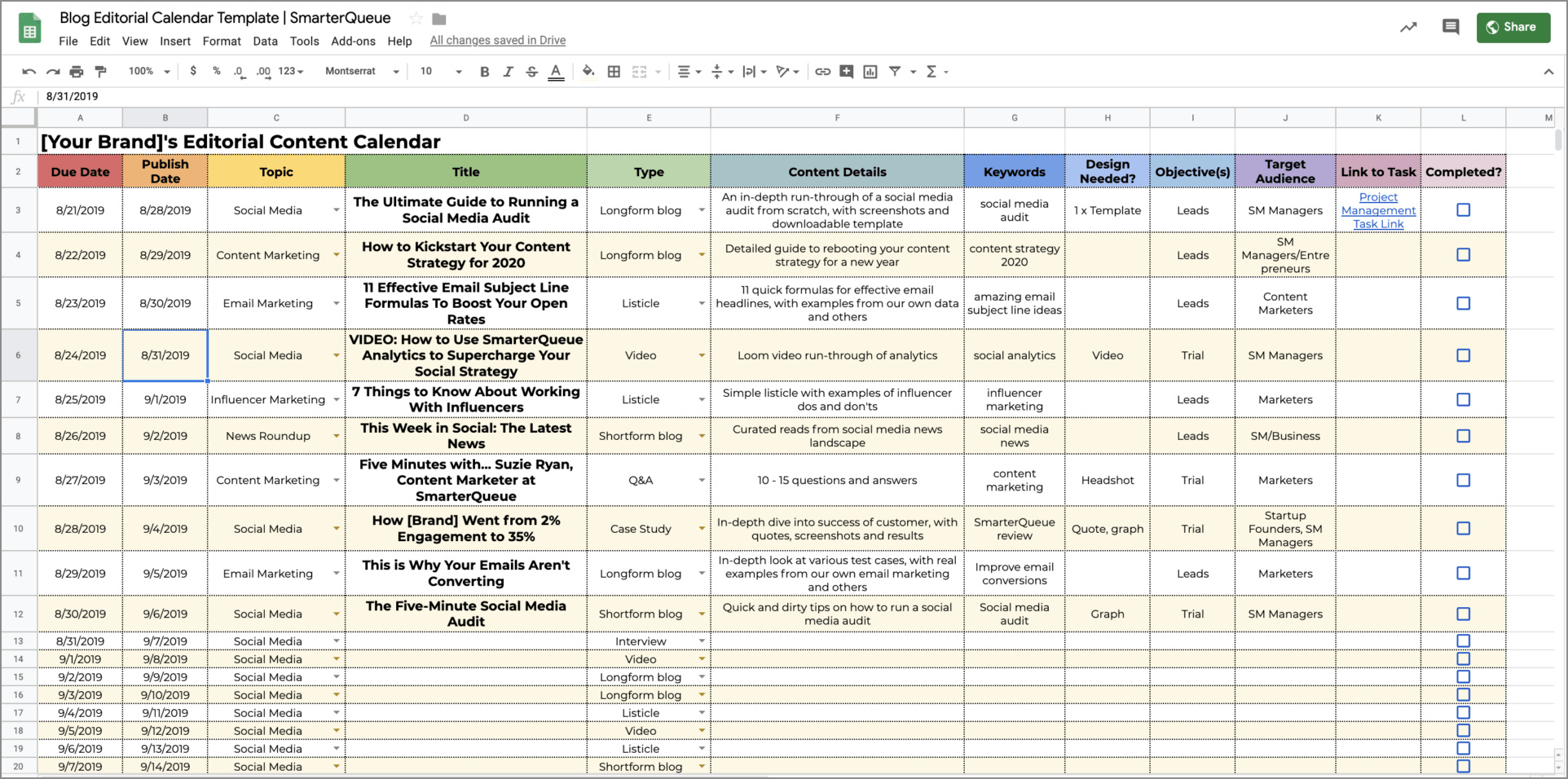
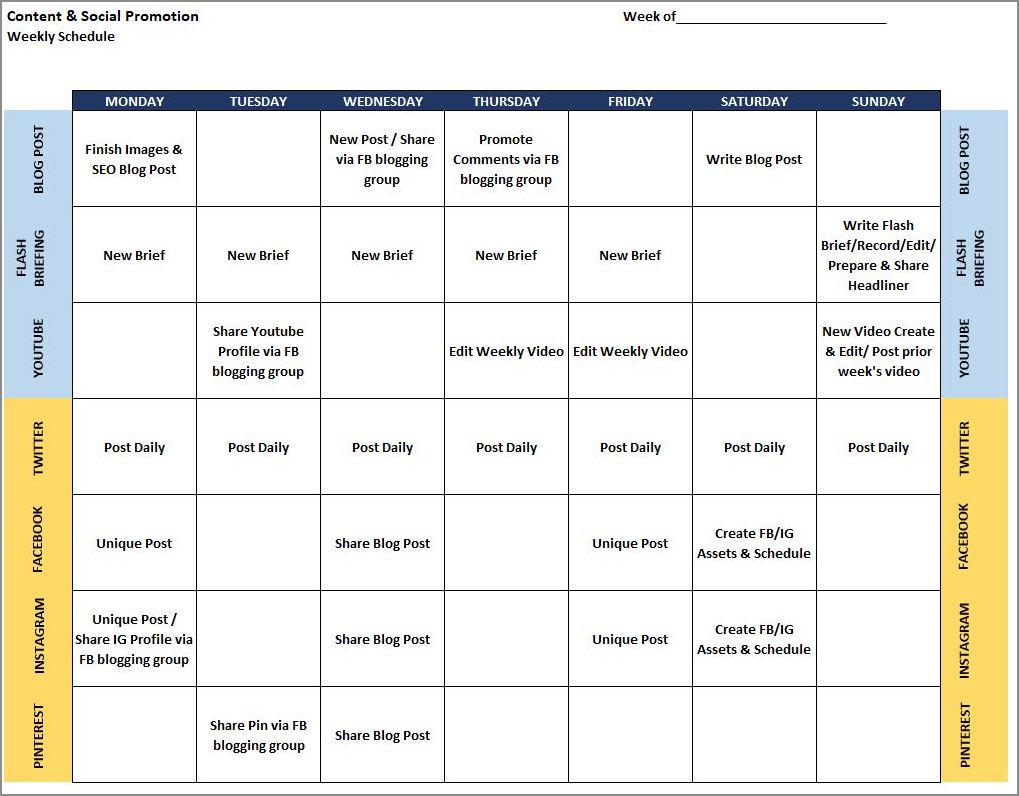
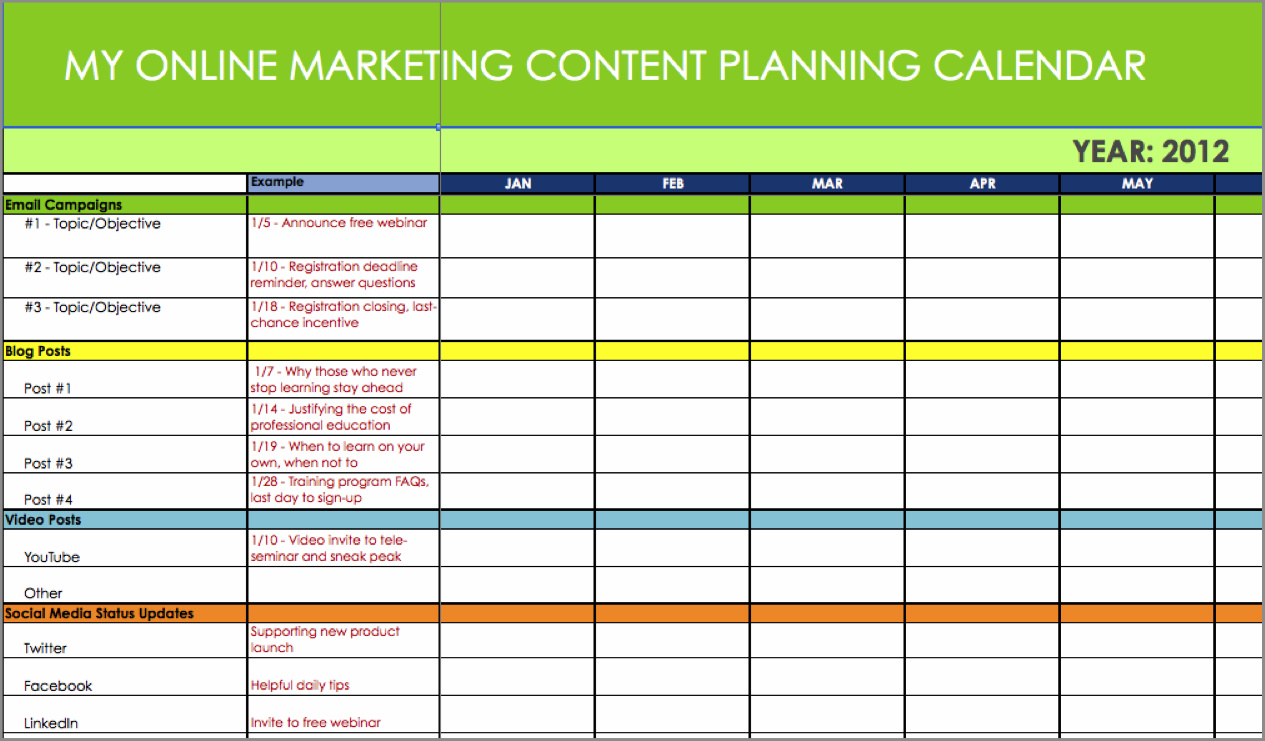
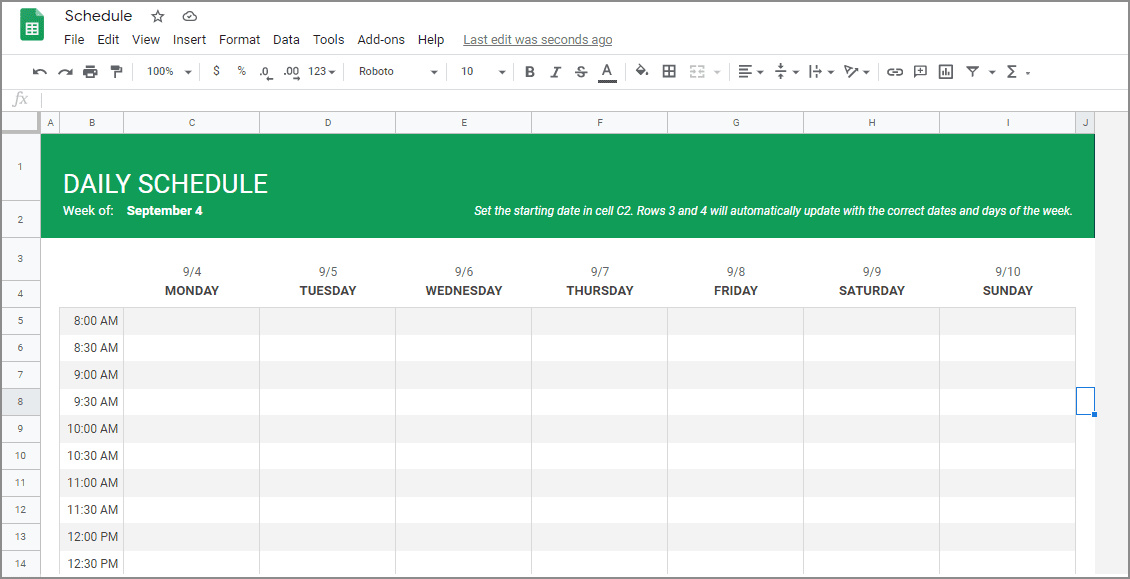
How to Create an Effective Content Schedule
Now that you understand the importance of a content schedule, let’s dive into the steps to create an effective one:
1. Define Your Content Goals and Objectives
Before you start creating your content schedule, it’s essential to define your goals and objectives. What do you want to achieve with your content? Are you trying to increase brand awareness, generate leads, or educate your audience? By clarifying your content goals, you can align your schedule with your overall marketing strategy and focus on creating content that supports your objectives.
2. Identify Your Target Audience
To create content that resonates with your audience, you need to understand who they are, what they care about, and how they consume content. Conduct thorough audience research to identify their demographics, interests, pain points, and preferred channels. This will help you tailor your content to their needs and preferences, ensuring maximum engagement and conversions.
3. Brainstorm Content Ideas
Once you have a clear understanding of your goals and audience, it’s time to brainstorm content ideas. Use tools like keyword research, competitor analysis, and social media listening to identify trending topics and popular keywords in your industry. Consider creating a mix of evergreen content, which remains relevant over time, and timely content, which addresses current trends and events.
4. Plan Your Content Calendar
Now that you have a pool of content ideas, it’s time to plan your content calendar. Start by determining your publishing frequency. How often do you want to publish new content? Consider factors like your resources, team size, and audience expectations. Next, assign specific topics or themes to each publishing slot, keeping in mind your content goals and audience preferences.
It’s also important to incorporate key dates and events into your content calendar. This includes holidays, industry conferences, product launches, and any other relevant milestones. By aligning your content with these dates, you can create timely and topical content that resonates with your audience.
5. Assign Tasks and Set Deadlines
To ensure a smooth content creation process, assign tasks and set deadlines for each stage of content production. This includes research, writing, editing, design, and promotion. Clearly define roles and responsibilities within your team and establish a workflow that allows for collaboration and feedback.
6. Create a Content Promotion Plan
Creating great content is only half the battle; promoting it effectively is equally important. Develop a content promotion plan that outlines how you will distribute and amplify your content. This includes sharing on social media, reaching out to influencers, guest posting, email marketing, and any other channels or tactics that align with your content goals.
7. Track and Analyze Performance
Once your content is live, it’s crucial to track its performance and analyze the results. Use analytics tools to measure key metrics like website traffic, engagement, conversions, and social media shares. This data will help you understand what content is resonating with your audience and what can be improved in future iterations of your content schedule.
8. Iterate and Optimize
Based on the insights gained from tracking and analysis, iterate and optimize your content schedule. Identify what is working well and replicate those successes. Experiment with new content formats, distribution channels, and messaging to continually improve your content strategy and drive better results.
The Benefits of Following a Content Schedule
Following a content schedule offers several benefits that can positively impact your content strategy:
- Consistency: A content schedule ensures that you consistently publish high-quality content at regular intervals.
- Organization: By planning your content, you can stay organized and manage your time effectively.
- Efficiency: A content schedule helps you streamline your content creation process and improve collaboration within your team.
- SEO Optimization: When you plan your content, you can strategically optimize it for search engines.
- Audience Engagement: By understanding your audience’s preferences, you can create content that resonates with them.
- Flexibility: A content schedule allows for flexibility, so you can adapt to industry trends and changes in your business goals.
Conclusion
A well-structured content schedule is a valuable tool that helps you stay organized, plan, and maximize the impact of your content strategy. By following the steps outlined in this guide, you can create an effective content schedule that aligns with your goals, engages your audience, and drives tangible results. Remember to regularly review and optimize your content schedule based on data and feedback, and always keep your audience at the forefront of your content strategy. With a well-planned and executed content schedule, you can take your content marketing efforts to the next level and achieve long-term success.
Content Schedule Template Excel – Download
